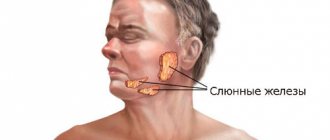The phenomenon occurs in women not only as a result of pathological changes in the body. Rare secretions from the glands are a natural process. It is determined by the characteristic structure of the paired organ. The fluid has a bloody or purulent consistency, accompanied by pain and compactions. If you notice any of the above symptoms, you should make an appointment with a mammologist. The specialist will identify the causes of discharge from the mammary glands when pressed, during pregnancy or before menstruation.
What causes discharge?
Women's breasts contain milk ducts, which are located between fibrous and fatty tissue. Each canal has an opening at the top of the nipple. All women have an individual number of ducts, but the maximum number can reach up to fifteen. Through the milk ducts, not only milk and colostrum are produced, but also physiological secretion.
In the absence of diseases or the influence of external negative factors, the following condition is inherent in whitish, transparent discharge from the mammary glands:
- scanty and abundant;
- thick and watery;
- viscous or slimy.
Any uniform consistency of secretion from the canals is normal, but only against the background of a transparent shade of liquid and a small volume. If there is too much discharge, it is not recommended to postpone a visit to the mammologist.
For a certain condition, there are indicators of the norm of physiological secretion:
- Scanty, thick (one or two drops). It is noted when pressing on the chest in young girls and nulliparous women a few days before menstruation and during increased sexual arousal.
- Not very abundant, liquid. Characteristic of older women and women who have given birth, but the appearance of thick liquid is possible.
- Viscous. Colostrum occurs during gestation, breastfeeding, and for several years after cessation of lactation (individual indicator).
Surgical intervention
Surgical intervention is also required if intraductal papilloma is found. The affected area should be removed. The removed particles are subjected to histological examination to reliably exclude the malignant nature of the papilloma. For Paget's disease, a mastectomy is prescribed, which involves removing the affected gland. Next, chemotherapy sessions are prescribed.
What could it be?
The first alarming symptom that indicates a possible disease is discharge from the mammary gland, which occurs when pressed and independently.
The causes of discharge are:
- Physiological: at birth - engorgement of the glands with the release of colostrum, the period of pregnancy and lactation, when the gland produces milk, residual discharge after the end of feeding.
- Pathological—hormonal disorders in the body, age-related changes, inflammatory diseases of the mammary glands, tumors.
conclusions
A competent approach to identifying diseases will certainly prevent serious consequences and maintain health. Bringing together the main causes of discharge from the mammary gland, we can highlight the main thing:
- Any discharge appearing from the nipples, except milk in pregnant and lactating women, indicates disorders in the body and requires diagnostics.
- Pathology can be detected in a timely manner by regularly examining the breasts and visiting a mammologist.
- You cannot self-medicate - the diagnosis must be made by a doctor.
Read
Also:
- Why does your chest hurt: causes, diagnosis and treatment
- Why do nipples hurt in women: what to do and when to see a doctor?
- Causes of breast engorgement
- What are the types of breast diseases in women and their causes?
- Thrush of the mammary glands - complications during breastfeeding
- How to treat lactostasis in nursing mothers at home. Breast blockage during breastfeeding
Pathological causes of breast discharge
The main causes of pathological discharge are:
- Chest injury (blows, bruises). If this happens without violating the integrity of the skin, then within two days the bloody fluid can be easily squeezed out of the nipple.
- Ductectasia is a disease characterized by pathological dilatation of ducts called subareolar canals. The disease is typical for women after 40, since its main cause is age-related changes. The disease does not pose a health hazard, but only if treated in a timely manner. Otherwise, serious consequences cannot be ruled out.
- Mastitis and abscess. Ailments either occur during lactation, or are a consequence of penetration of an infected object. With mastitis, the area of the gland becomes inflamed. The cause is a bacterial infection, in most cases Staphylococcus aureus. With an abscess, pus accumulates in the breast tissue, the affected area is limited from the healthy area.
- Intraductal papilloma is a papillary benign tumor. It appears in the duct near the nipple. Due to the development of the tumor, a thick fluid is released, which sometimes contains blood impurities.
- Fibrocystic mastopathy is the appearance of dense areas of tissue in the mammary gland. The condition is dangerous because it can develop into cancer.
- Malignant neoplasm (breast cancer) is a tumor that forms unnoticed due to uncontrolled cell division. Discharge appears when pressure is applied from both mammary glands or only from one.
- Galactorrhea is a disease in which pressure from the nipple causes milk to leak, but this does not apply to breastfeeding. The main cause of galactorrhea is hormonal imbalance, excess prolactin. The disease sometimes accompanies diseases of the brain or thyroid gland.
- Paget's disease is a malignant tumor that involves the nipple or areola. The disease is extremely dangerous and requires prompt diagnosis and treatment.
Signs of pathology
The appearance of discharge from the mammary glands in the absence of pregnancy and in non-lactating women indicates the development of pathology. Signs such as the color of the discharge, smell, abundance, and thickness are important.
It is worth paying attention to the presence of other symptoms: engorgement, pain, changes in the color and shape of the nipples and the surrounding areolas, redness of the breast skin, changes in the shape of the gland. One or more signs indicate the onset of the disease and the need for urgent examination.
Chest injury
If the mammary gland is injured (bruise, sharp compression), fluid may leak from the nipple when pressed, sometimes mixed with blood. The consequence of injury can be the formation of an abscess - an accumulation of purulent contents.
Ectasia of the milk ducts
With the onset of menopause, the ratio of fat and connective tissue in the mammary gland changes, the ducts can expand and become deformed. Ectasia (ductectasia) of the milk duct develops, which is also called plasmacytic mastitis. The discharge is mucous and green or mixed with black. There may be no painful sensations.
The development can also be caused by previous purulent mastitis or post-traumatic inflammation. Excessive milk production during lactation can lead to dilation of the milk duct. Despite the fact that ectasia itself is not a serious disease, it may indicate the onset of an oncological process and requires careful examination and treatment.
Diagnosis of ectasia, in addition to conventional mammography and ultrasound, involves cytological examination of discharge for malignant degeneration.
Treatment of ectasia in most cases is therapeutic: prescribing a course of antibiotics, anti-inflammatory drugs, immunomodulators, correcting hormonal levels, applying compresses. If the condition does not improve, sectoral resection is prescribed - the affected duct is surgically removed.
Intraductal papilloma (cystadenopapilloma)
For various reasons (due to injury, hormonal imbalance), a mushroom-shaped growth - papilloma - can form inside the milk duct. This is a benign tumor that produces a liquid secretion, which is released from the duct.
Non-inflammatory papilloma does not cause pain; its obvious signs are viscous bloody discharge from the mammary gland. When infection penetrates, inflammation is possible - the tumor becomes hard to the touch, can be easily felt, and the characteristic discharge is yellow, mixed with pus.
Cystadenopapilloma is a precancerous disease; when it is detected, it requires not only general examinations - mammography and ductography, but also taking a puncture from the tumor in order to determine its possible malignancy. Treatment is only surgical - a sectoral resection is performed, the tumor and part of the milk duct are removed. The chest is preserved.
Fibrocystic mastopathy (fibrocystic)
Caused by hormonal fluctuations. Fluid-filled cysts form in the breast tissue. With this condition, nipple discharge is usually brown or greenish. In addition to discharge, symptoms of mastopathy include swelling, thickening of the glands, and a feeling of fullness, especially before menstruation.
Fibrocystic disease requires therapeutic treatment and constant monitoring. With a favorable course of mastopathy, the cystic tissue gradually resolves, malignant degeneration is rare.
Mastitis
This inflammation of the breast tissue is caused by a penetrating staphylococcal infection and is purulent in nature, most often developing in nursing mothers. In this case, purulent foci are formed inside the gland - abscesses, their contents are released through the nipples. General health may deteriorate and the temperature may rise. Antibiotics are used to treat mastitis. In severe cases, if the discharge from the chest is profuse, an operation is performed to remove the purulent contents.
Galactorrhea
In this condition, colostrum is released from the nipples - a thick or thin white secretion that resembles milk. It occurs in non-pregnant, nulliparous women, men and even children. Galactorrhea is not an independent disease - it is a symptom of increased production of prolactin (milk hormone). A malfunction in the body causes dysfunction of the thyroid gland, which in a healthy state “inhibits” milk production. Galactorrhea can be caused by diseases of the pituitary gland and hypothalamus - parts of the brain that regulate the functioning of the hormonal system.
The pathology is treated by eliminating the causes: after excluding possible pregnancy, a blood test is performed for the presence of thyroid hormones, sex hormones, magnetic resonance imaging of the pituitary gland and hypothalamus, and a course of hormonal therapy is prescribed. If brain or thyroid tumors are detected, surgery may be required.
Breast cancer
With a malignant tumor in the mammary gland, discharge is quite rare and is possible in two cases:
- intraductal cancer - located in the milk duct;
- in late advanced stages of cancer;
- discharge comes from only one gland affected by the tumor.
The discharged fluid is bloody, yellow or mixed with pus. With cancer, there is a change in the shape and color of the nipple, its retraction, a possible change in the size and shape of the gland, the axillary lymph node enlarges, and a hard lump can be felt in the breast.
Breast cancer is diagnosed in most cases during a self-examination or an appointment with a mammologist. The detected compaction is examined using mammography, ultrasound, MRI, and biopsy.
A malignant tumor that does not have metastases can be removed using sectoral resection, in which case it is possible to save the breast. If the tumor is large, a mastectomy is performed - the entire gland and adjacent affected tissue are removed.
Only about 5% of all detected tumors turn out to be cancerous, but you cannot delay contacting a doctor if you discover strange signs. Any pathological process can give rise to the development of cancer.
Physiological causes of discharge
Physiological features explain the discharge:
- Some time after finishing feeding. Discharge may continue for the next two or three years. It depends on the woman’s age and the number of pregnancies she has had.
- During pregnancy. In the female breast, preparations take place for the birth of a baby and its feeding. The glands train how to produce milk and remove it. Similar processes occur in the third and final trimester. Increased uterine tone stimulates the secretion of cloudy white or yellowish fluid from both mammary glands.
- When using contraceptives. Oral contraceptives contain hormones that stimulate lactation. The discharge should disappear after discontinuation of contraceptives. They should be replaced with another type. But it is wise to do this only on the recommendation of a doctor.
- After an abortion. The presence of discharge and its duration are determined by the period at which the artificial termination of pregnancy occurred. They can bother a woman from several days to a month.
The release of a small amount of clear fluid is possible during treatment with hormonal drugs or the use of antidepressants. The cause could be a too-tight bra or physical overload.
Determining the color
Based on the color of the discharge, the doctor can easily determine the disease that is causing the disease:
- Yellow. Yellow discharge with a creamy tint (colostrum) is released after childbirth in the first days. If a yellowish tint appears before menstruation and is accompanied by pain, then mastopathy can be assumed.
- Purulent. They appear when an abscess develops inside the ducts, and are observed with mastitis. Bloody discharge is dangerous. They often indicate a malignant neoplasm.
- White. Appear after taking contraceptives and with a pituitary tumor.
- Green. The dark green color is given by the pus that is released during mastitis.
- Brown. Occurs when a cyst or tumor forms in the mammary gland. A dark-colored liquid is released when it enters the milk ducts when the capillaries are damaged.
- Transparent. If they appear before menstruation, this is normal.
- Bloody. This is a sign of the development of a malignant neoplasm or damage to blood vessels.
- Black. Observed during the disintegration of a malignant neoplasm.
The amount of fluid released may be small or quite large when it is necessary to use breast pads.
Galactorrhea
A phenomenon in which colostrum or milk is released randomly during the period of non-pregnancy, after the completion of the lactation process for several months. The reason is excess prolactin in the blood, sometimes observed in men. Provoking factors:
- pituitary tumor;
- trauma to the hypothalamus, the occurrence of a neoplasm;
- diseases of the ovaries, thyroid gland, adrenal glands;
- liver or kidney failure;
- severe stress.
Galactorrhea of idiopathic origin - a clear or white liquid similar to milk is secreted, but the cause of its appearance cannot be determined. The pathology causes damage to the entire female body - the menstrual cycle is disrupted, hair on the body and face grows rapidly, acne appears, and libido disappears.
Breast self-examination
In order to “catch” the onset of a disease in time, it is useful to conduct periodic breast examinations yourself. It's easy and doesn't take much time.
The examination is carried out in the first half of the monthly cycle after the end of menstruation
- Once naked to the waist, you need to stand in front of the mirror. With your hands down, carefully examine your chest to see if there is any redness, swelling, or changes in the shape of the glands. Raise your hands behind your head and examine your chest in this position.
- Gently squeezing the nipples at the bases, check for any discharge.
- Holding one hand behind your head, use gentle circular movements to examine each gland from the nipples to the armpits. Repeat the examination in the supine position.
Normally, no hardness or swelling should be felt in the chest. Any oddities should alert you - discharge, inverted nipples, bulges, changes in skin color.
You need to examine your breasts yourself once every 3-4 months, this will allow you to notice any changes in a timely manner.
If you detect discharge from the mammary glands, be sure to consult a doctor immediately. There is no need to panic or be afraid. The vast majority of glandular discharges are not cancer. The term “cancerophobia” is even common among doctors, the fear of this disease is so strong among patients. Timely diagnosis and treatment will prevent the development of complications.
When should you see a doctor?
There are a number of symptoms, if they occur, you should immediately contact a specialist:
- discharge bothers you for more than two days;
- they contain an admixture of blood;
- the secretion comes out of only one mammary gland;
- the discharge has a thick consistency;
- peeling appears on the skin of the nipple;
- loss of symmetry (increase in size, formation of dense knots);
- the color of the nipple and the area around it changes;
- pain appears in the chest.
Discharge from the mammary glands when pressed, as well as any changes in this area should not be ignored. Timely visits to the doctor, diagnosis, and therapy will help avoid complications and serious illnesses.
Malignant formation
With breast cancer, viscous bloody clots appear, less often brown ones. They leak from one breast, where there is affected tissue. Additional symptoms:
- the skin of the breast peels off, turns red, and becomes significantly thicker;
- local increase in gland temperature;
- lymph nodes enlarge;
- upon palpation, a formation with uneven contours is felt;
- nipple retraction.
Pain is a symptom that appears too late in cancer, so you should undergo examinations on time.
Competent diagnostics
Pathological processes in the mammary gland are the sphere of influence of the mammologist. When contacting him, you will be assigned:
- mammography;
- microscopy and culture of breast discharge;
- ultrasonography;
- Magnetic resonance imaging;
- CT;
- clinical blood test;
- cytological examination;
- tests for the level of various hormones in the body;
- radiography;
- ductography;
- biopsy, etc.
These diagnostic methods allow you to examine the structure of the mammary gland, assess the degree of its functionality, identify the presence of an inflammatory or infectious process, and also eliminate the risk of developing a cancerous tumor.
In addition, the doctor will listen to the patient, analyze her complaints, trace her medical history, and find out about cases of malignant neoplasms in the woman’s family.
He will then conduct a thorough contact examination of the breast. The concentration and appearance of the discharged fluid will be assessed, as well as the presence of blood in it. The specialist will carefully examine the condition of the breast itself. First of all, he will check for compliance with the norm the size, shape, color, type of nipple, its color and the severity of any changes.
If there are nodules, lumps or painful tumors in the patient’s mammary gland, he will conduct a differential diagnosis.
How to treat?
Discharge is not a disease, but only a symptom of it. It is necessary to find out the cause that caused the symptoms of a particular disease in order to select a therapeutic treatment regimen. It can be conservative, but surgical opening of purulent cavities is not excluded:
- Treatment of galactorrhea involves eliminating the underlying cause of the disease.
- Therapy for breast discharge with mastopathy is conservative and symptomatic.
- In Paget's disease, the affected mammary gland is removed followed by a course of chemotherapy.
- Lacteal duct ectasia is treated with compresses, and if it becomes infected, antibiotics are prescribed. In special cases, surgical treatment is indicated.
- Mastitis and abscess can be cured with antibiotics or opening the purulent cavities.
- Intraductal papilloma (benign formation) develops in the milk duct near the nipple. Treatment consists of surgical removal of the affected area.
- Hormonal imbalance has serious consequences for a woman’s body. A blood test is required to test sex hormones. Hormonal drugs are prescribed for treatment.
- In case of breast injury, anti-inflammatory medications are prescribed after a mammological examination.
With constant discharge, surgical removal of the dilated milk duct is possible. If a malignant tumor is detected, the patient is referred to an oncologist. She is prescribed a combination treatment, which includes surgery, radiation and chemotherapy in various combinations.
Fibrocystic mastopathy
The condition causes chest pain, especially intense in the second phase of the menstrual cycle. A yellow or transparent liquid appears from the nipples and disappears after menstruation. The discharge intensifies if you put pressure on the gland or wear tight underwear. What does the color indicate?
- greenish substance – infection has occurred;
- brown, bright bloody - indicate the growth of a malignant tumor.
With mastopathy, it is necessary to regularly monitor the course of the disease to avoid dangerous consequences.
Prevention
To prevent the development of breast diseases it is necessary:
- Maintain optimal body weight and daily physical activity
- Maintain proper diet and sleep
- Avoid blows, bruises, cuts, punctures and other damage to the chest and décolleté area.
- Do not neglect natural feeding
- Give up bad habits, minimize the number of stressful situations
- Limit from excessive use of hormonal drugs
- Be examined by a mammologist twice a year
It is equally important to regularly self-palpate the glands. If there are neoplasms, they can be most clearly felt during menstruation. In everyday life, it is better to use comfortable underwear made of natural fabric. The bra should support the breasts, not compress them.
The listed recommendations have a positive effect on hormonal levels, help strengthen the immune system, and minimize the risk of pathological discharge from the mammary glands.
Cyst in the mammary gland Thyroid cyst: symptoms and treatment Bartholinitis Hypothyroidism Prostate adenoma - what is it? Symptoms and treatment of Pancreatitis
Mastitis
Mastitis is an acute infectious disease. The course is complicated, accompanied by severe pain, intense green and even brown discharge, and pus appears. A woman suffers from fever, the skin of her breasts turns red, becomes very thick, and peels. Causes:
- improper pumping during feeding - there is no constant frequency, milk stagnation occurs;
- cracked nipples;
- associated infection in the body;
- lack of hygiene.
In this case, you must stop breastfeeding, immediately consult a doctor, and start taking antibiotics. There is a risk of abscess formation.











